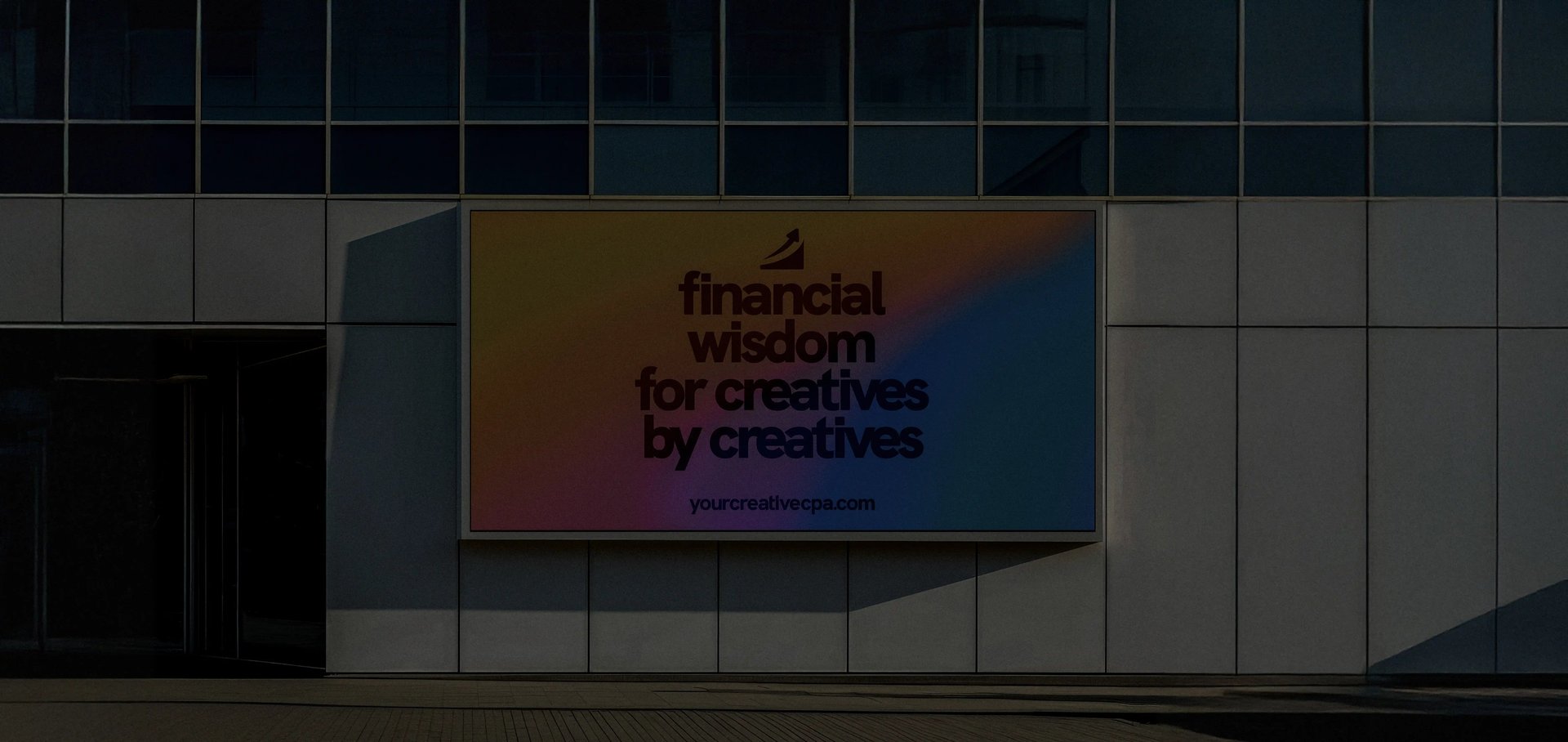
Easily Understand Your Finances With The Financial Health Check Template Today
Quick Answer: What is Liquidity?
Learn what liquidity is, how to improve your liquidity and increase your cash, the role liquidity plays in financial statements and investing, and more.
HOMEPAGE - FEATURES - ROW 1QUICK ANSWERBUSINESSINVESTINGACCOUNTING
David Kindness, CPA
8/13/2025



Quick Answer: What is Liquidity?
Published on August 12, 2025
Why you can trust Your Creative CPA
Our content is written and edited by industry experts who are creative entrepreneurs just like you. Learn more. We're human-first.
Running a creative business - whether you're a photographer, musician, designer, or YouTuber - means juggling passion and profits. One key to staying financially healthy? Liquidity.
But what exactly is liquidity, and why does it matter for your business? In simple terms, liquidity is how easily you can turn your assets (like cash, equipment, or unpaid invoices) into spendable money without losing value.
Think of it like this: If your business were a water bottle, liquidity would be how fast you can pour the water out when you’re thirsty. The easier it flows, the better.
What is Liquidity?
Liquidity measures how quickly and easily you can convert something you own into cash. Everything a business owns is more or less liquid, from cash to a skyscraper. The easier the asset is to sell for cash, the more liquid it is, and vice versa. Financial investments are considered very liquid, while real estate is considered illiquid (not liquid).
Let's explore some examples of assets based on their liquidity..
Examples of More and Less Liquid Assets
Most Liquid: Cash is the most liquid because it’s already spendable.
Very Liquid: Financial investments (stocks, bonds, mutual funds, ETFs, etc) are very liquid because they can be sold and converted into cash quickly.
Somewhat Liquid: Current inventory and unpaid invoices (which is money clients that owe you) are somewhat liquid because you have to wait a short time to get paid.
Not Very Liquid: Equipment (like cameras, guitars, loupe decks, laptops, drawing tables, etc) is even less liquid because you’d have to sell it in order to convert it into cash.
Not Liquid: Real estate is an example of an illiquid (not liquid at all) asset because it can take months or even years to sell it and convert it into cash.
For creative entrepreneurs, liquidity is crucial because income can be unpredictable. A videographer might have a big project one month and nothing the next. Having liquid assets ensures you stay afloat during the down times. High liquidity means you can cover bills, pay yourself, or handle emergencies without stress. Low liquidity means you might struggle if unexpected costs pop up.
What Role Does Liquidity Play in Business and Investing?
Keeps Your Business Running Smoothly
Without cash flow, even successful businesses can fail. If you’re a clothing designer waiting for payments from retailers, but rent is due, liquidity problems could jeopardize not just your personal livelihood, but your business's livelihood as well.
Helps You Handle Emergencies
What if your camera falls and breaks right before a shoot? Or your laptop dies midway through mixing and mastering your upcoming song? Liquid funds allow you to fix problems fast and operate smoothly.
Allows You to Seize Opportunities
A musician might get a last-minute chance to record in a professional studio, or a photographer might need to rent a new lens or buy a flash to say yes to an important shoot. If they have cash ready, they can take advantage of the opportunity. Low liquidity could mean missing out.
Impacts Your Ability to Get Loans
Banks and investors will look at your financial statements, including your income statement, balance sheet, and statement of cash flows, before lending you money. They will also check your liquidity, which will help them determine your ability to repay the loan. In general, higher liquidity will result in better loan terms (lower interest).
Affects Your Personal Finances
Many creatives mix personal and business money. Good liquidity means you can pay yourself consistently, maintaining your business and your life.
How to Determine Your Liquidity
Your liquidity can be determined in a few ways, but the easiest method is using your balance sheet. Here's how to do it...
Step 1 - Add up your liquid assets, including cash, financial investments, unpaid invoices, and inventory or gear that is close to being sold.
Step 2 - Subtract upcoming bills, like rent, software subscriptions, loan payments, utilities, studio rental fees, gear purchases, etc.
Step 3 - Calculate your liquidity. You can either use your net liquidity (liquid assets minus upcoming payments) as a measure of it, or calculate your liquidity ratio, or the amount of liquid assets you own relative to your short-term debts, by dividing net liquidity by total short-term debts. If you use the ratio approach, a ratio of 1 is generally considered healthy. Here's an example of the liquidity ratio calculation...
Liquid assets = $5,000 (cash + financial investments + expected payments)
Short-term debts = $3,000 (bills due this month)
Liquidity ratio = $5,000 ÷ $3,000 = 1.67 (Healthy!)
PRO TIP: If you don't have a balance sheet, download our Balance Sheet Template to create one today. It costs less than a cup of drip coffee and will benefit your business significantly.
How to Improve Liquidity
The most successful businesses take a multifaceted approach to improving liquidity. To make sure your creative business stays financially flexible, try these tips:
Keep a Cash Reserve
Save at least 3-6 months’ worth of expenses in an emergency fund. Even small, regular savings add up over time.
Speed Up Invoicing & Payments
Send invoices immediately after a job.
Consider offering discounts for early payment (e.g., “2% off if paid within 7 days”).
Use payment apps (like Wise, PayPal, Stripe, or Venmo) for faster transactions.
Reduce Unnecessary Expenses
Cut costs that don’t help your business grow. For example:
Swap expensive software or web hosts for less expensive alternatives (Premiere Pro to DaVinci Resolve, anyone?).
Share studio space with other artists to split rent, or cancel long-term studio rentals in favor of cheaper daily or hourly rentals if not utilized often enough.
Sell Unused Equipment
Old cameras, mics, or design tablets sitting around? Consider selling them for quick cash.
Use Short-Term Financing (When Needed)
Line of credit - Borrow only what you need, pay interest only on what you use.
Invoice factoring - Sell invoices that will never be paid to a collections company for quick cash (for a fee).
Diversify Income Streams
Offer digital products (photo presets, design templates, beats, sound effects, guides, etc).
Take advantage of passive income (YouTube ads, stock photo sales).
Teach workshops or sell online courses.

Liquidity measures how quickly and easily you can convert something you own into cash.



The Bottom Line
Liquidity might sound like legalese or a fancy finance term, but the reality is that it - along with cash flow - is the lifeblood of your creative business. The more liquid you are, the more freedom you have to invest, create, grow, and handle challenges.
By keeping cash available, making payments on time, and managing expenses wisely, you can build a business that’s both creatively fulfilling and financially stable.
Frequently Asked Questions (FAQs)
How much cash should I keep in my business emergency fund?
Aim for 3-6 months of operating expenses. If your income is unpredictable (like for freelancers), leaning closer to 6 months is generally safer. Similarly, it's important to keep an emergency fund for your personal expenses, like rent, groceries, utilities, etc, as well.
What’s the difference between liquidity and cash flow?
Liquidity represents how quickly assets can become cash, while cash flow is the movement of money (and specifically cash) into and out of your business.
Should I take out a loan to improve liquidity?
You should only ever take out a loan if you have a clear and achievable repayment plan. Loans can be helpful in the short term, but create debt, which can harm you and your business in other ways if it goes unchecked. It's important to explore your options before taking out a loan, like optimizing your budget, cutting costs, selling unused gear, etc, before committing to a loan.
How do I know if my business has poor liquidity?
Signs of poor liquidity can include:
Struggling to pay bills on time.
Relying on credit cards for daily expenses.
Frequently waiting for client payments to cover costs.
If you're experiencing any of these symptoms, consider focusing on building a budget and increasing your savings where possible.
Can too much liquidity be a bad thing?
Yes, it's possible to have too much liquidity. Holding too much cash could mean that you're missing out on opportunities for growth, like investing in better equipment or increasing your marketing budget. It's important to balance liquidity with optimizing and improving your business.
Disclaimer: the information provided in this article is for educational purposes only and does not constitute tax, accounting, investing, legal, or financial advice. The information in this article does not take into account your unique financial or business situation or goals, and YCCPA cannot be responsible for reader's financial decision-making. YCCPA's goal is to educate and support you on your creative business journey.
Written by David Kindness, CPA
David is a CPA (Certified Public Accountant) and professional photographer, videographer, and designer based in San Diego, California. Learn more.
Supported by Ads
Your Creative CPA is supported by the ads you may see in our articles and guides. These ads help us serve creatives like you.







Created by David Kindness
© 2025 Your Creative CPA | Terms
type1wild.com partner
Exclusive guides and tools for creatives, right to your inbox.









